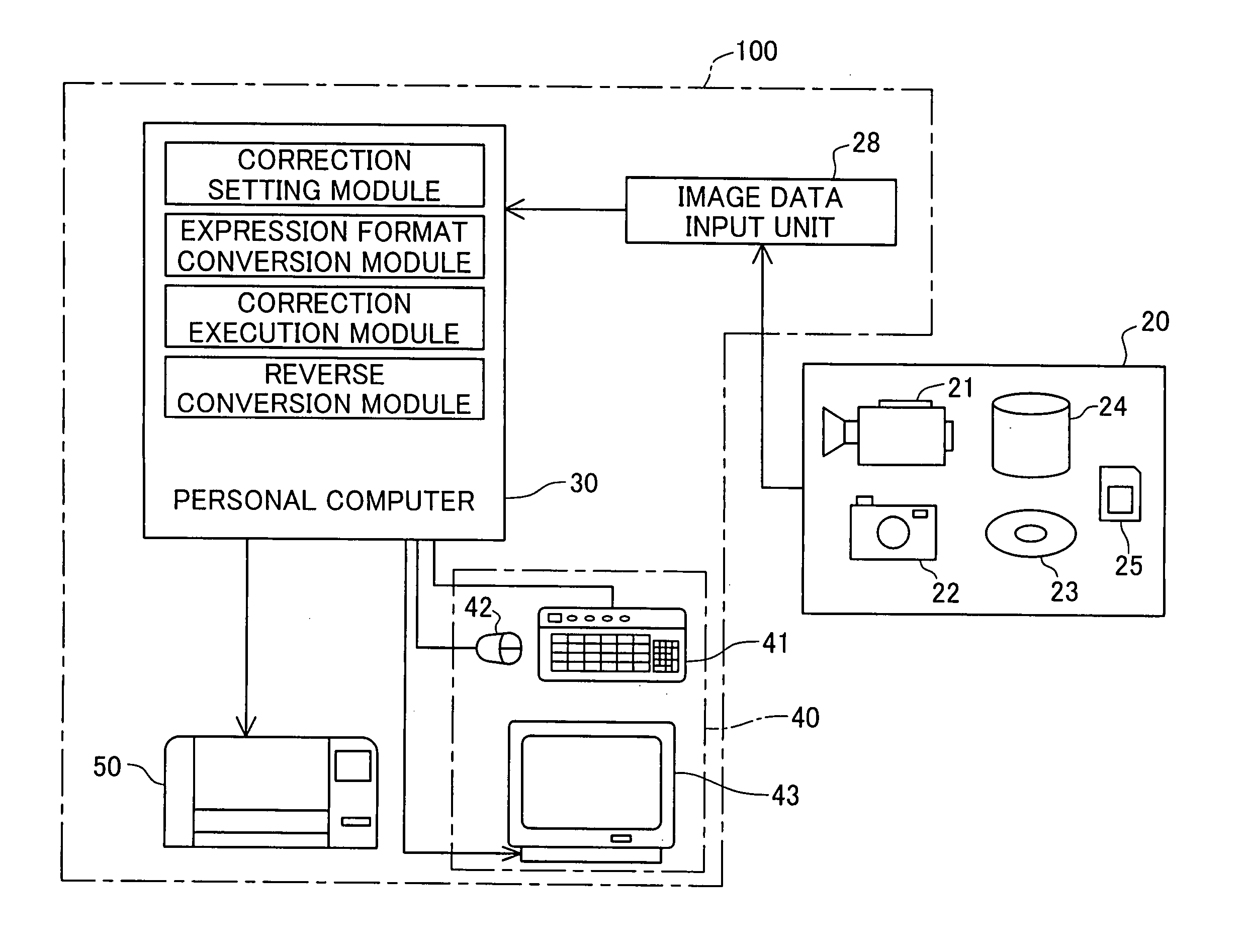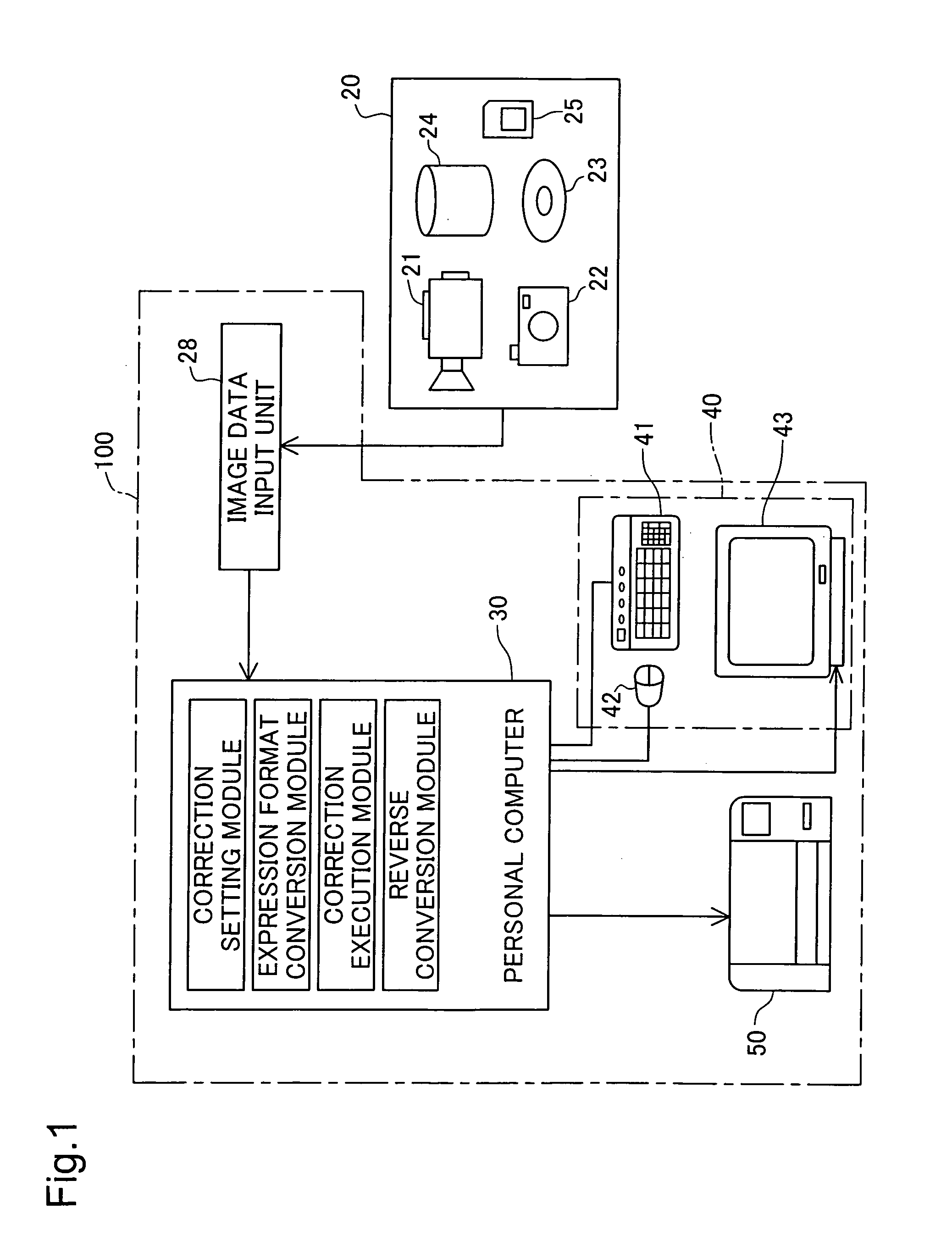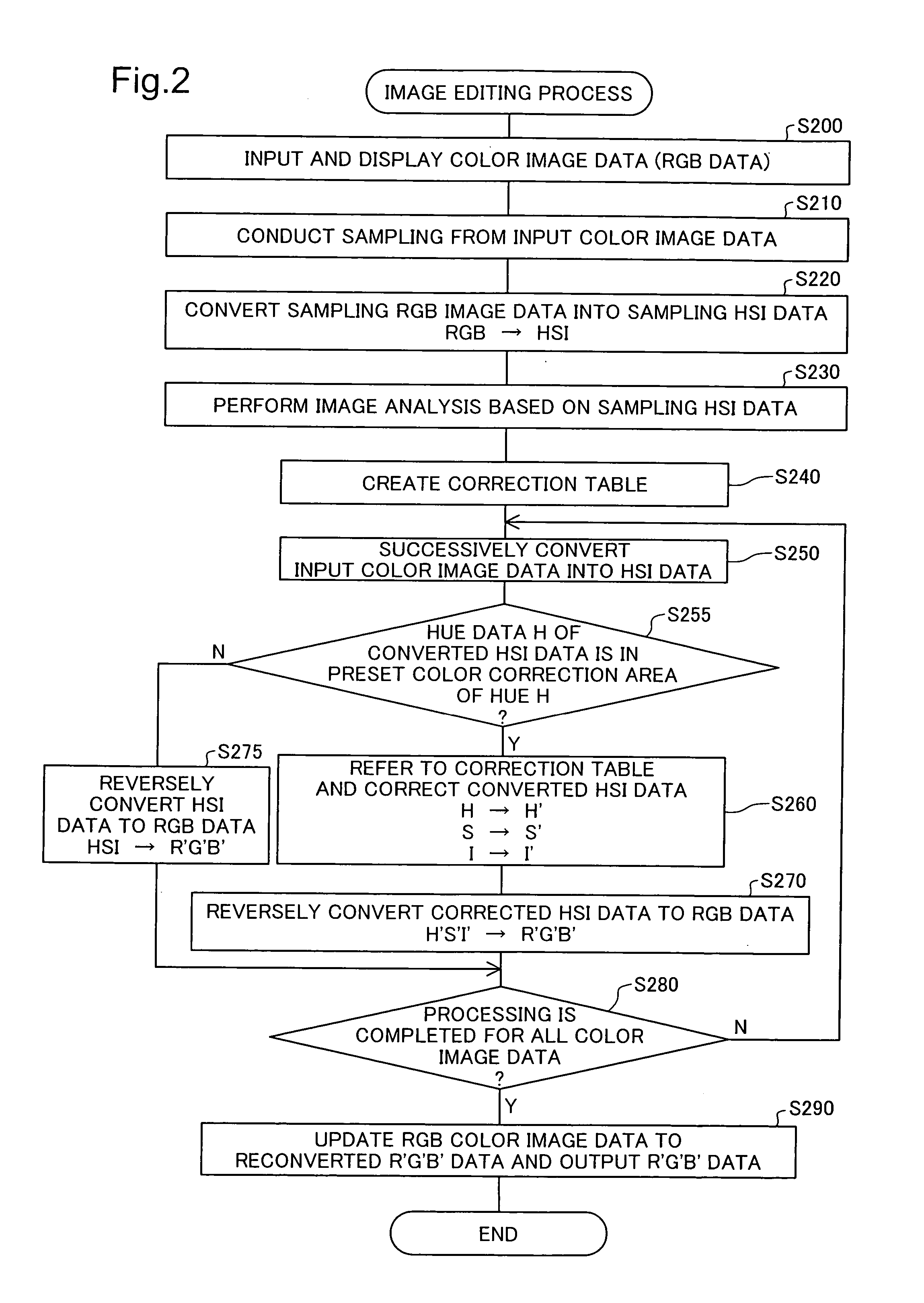Image data processing of color image
a color image and image data technology, applied in the field of color image image data processing, can solve the problems of increasing the processing load of correction, extending the total data processing time, and user feeling some oddness and strangeness in the picture quality of the resulting corrected color image, and achieve the effect of no substantial change in the picture quality of the resulting color imag
- Summary
- Abstract
- Description
- Claims
- Application Information
AI Technical Summary
Benefits of technology
Problems solved by technology
Method used
Image
Examples
embodiment
A. Embodiment
A1. Configuration of Image Processing System
[0033]FIG. 1 schematically illustrates the configuration of an image processing system 100 in one embodiment of the invention. As illustrated, the image processing system 100 includes a personal computer 30 as a primary device, user interfaces 40 operated by the user to instruct a required series of image editing process, and a color printer 50 used to output edited images. An image data input unit 28 inputs image data from an image database 20, which supplies various image data representing moving images and still images, and transfers the input image data to the personal computer 30. The personal computer 30 stores the input image data into non-illustrated memory units, such as internal memories and a hard disk.
[0034] The image database 20 includes various imaging devices, such as a digital video camera 21 and a digital still camera 22, and diverse image data storage units, such as a DVD 23, a hard disk 24, and a memory c...
PUM
 Login to View More
Login to View More Abstract
Description
Claims
Application Information
 Login to View More
Login to View More - R&D
- Intellectual Property
- Life Sciences
- Materials
- Tech Scout
- Unparalleled Data Quality
- Higher Quality Content
- 60% Fewer Hallucinations
Browse by: Latest US Patents, China's latest patents, Technical Efficacy Thesaurus, Application Domain, Technology Topic, Popular Technical Reports.
© 2025 PatSnap. All rights reserved.Legal|Privacy policy|Modern Slavery Act Transparency Statement|Sitemap|About US| Contact US: help@patsnap.com



